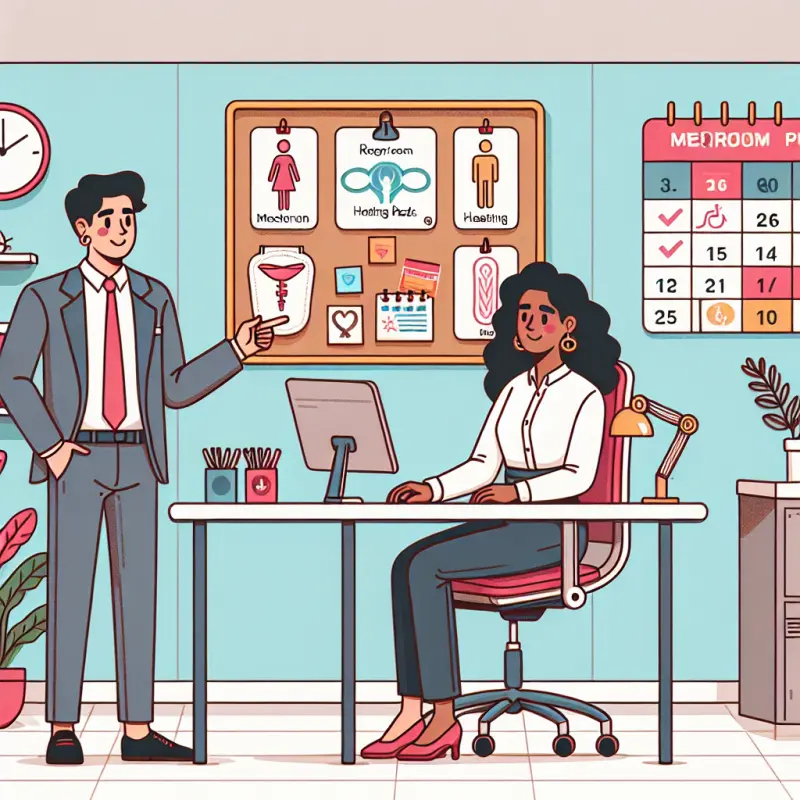Creating Menstrual-Friendly Workspaces: Design and Policy

Creating Menstrual-Friendly Workspaces: Design and Policy
Introduction
In the contemporary workplace, diversity and inclusion are more than just buzzwords; they are essential components of a thriving organizational culture. Despite significant progress, menstruation remains a taboo subject, often overlooked in workplace policies and design. This oversight can lead to discomfort and discrimination, particularly for menstruating employees. Creating menstrual-friendly workspaces through thoughtful design and inclusive policies can significantly enhance employee well-being, productivity, and job satisfaction. This article explores the strategies and benefits of implementing menstrual-friendly practices in the workplace.
Understanding the Need for Menstrual-Friendly Workspaces
Breaking the Taboo
Menstruation is a natural biological process experienced by approximately half of the global population. Despite its ubiquity, menstruation is often stigmatized, leading to embarrassment and discomfort in discussing menstrual needs openly. This stigma can perpetuate negative workplace experiences and hinder employees' ability to perform at their best.
The Impact on Employee Well-being
- Physical Discomfort: Menstruation can cause a variety of physical symptoms, including cramps, fatigue, and headaches, which can impact an employee's ability to work efficiently.
- Mental Health: The stress of managing menstrual symptoms while maintaining professional performance can contribute to anxiety and decreased mental health.
- Absenteeism: Menstrual-related discomfort can lead to increased absenteeism, impacting productivity and workplace dynamics.
Designing Menstrual-Friendly Workspaces
Ergonomic Office Design
Creating a physical environment that accommodates menstruating employees involves several key considerations:
- Rest Areas: Providing quiet, comfortable rest areas can offer relief for employees experiencing fatigue or cramps.
- Adjustable Workstations: Ergonomic workstations with adjustable seating and desks can help alleviate physical discomfort during menstruation.
Accessible Sanitary Facilities
Ensuring easy access to sanitary facilities is crucial for menstrual-friendly design:
- Proximity: Restrooms should be conveniently located within close proximity to all work areas.
- Supplies: Stock restrooms with menstrual products such as pads and tampons, and ensure regular replenishment.
- Cleanliness: Maintain high standards of cleanliness and hygiene in restroom facilities to ensure a comfortable environment.
Privacy and Comfort
Privacy is an important aspect of managing menstruation at work:
- Private Changing Areas: Designate private changing areas within restrooms for employees to manage menstrual hygiene discreetly.
- Disposal Units: Provide discreet disposal units for menstrual products in all restrooms.
Implementing Menstrual-Friendly Policies
Flexible Work Arrangements
Flexibility in work arrangements can help accommodate employees' menstrual needs:
- Remote Work Options: Allow employees to work from home if they experience severe menstrual symptoms.
- Flexible Hours: Implement flexible working hours to enable employees to manage their symptoms while maintaining productivity.
Paid Menstrual Leave
Offering paid menstrual leave can demonstrate a commitment to supporting employees' health and well-being:
- Policy Structure: Define clear guidelines for menstrual leave, including the number of days and documentation required.
- Inclusivity: Ensure that the policy is inclusive of all employees who menstruate, regardless of gender identity.
Health and Wellness Programs
Integrating health and wellness initiatives can further support menstrual health at work:
- Education and Awareness: Conduct workshops and seminars to raise awareness about menstrual health and destigmatize menstruation.
- Health Resources: Provide access to resources such as menstrual health information, consultations with healthcare professionals, and support groups.
Building an Inclusive Workplace Culture
Open Communication
Fostering open communication about menstrual health can create a more inclusive workplace environment:
- Leadership Support: Encourage leadership to openly discuss menstrual health and model supportive behaviors.
- Feedback Mechanisms: Implement anonymous feedback systems to allow employees to voice concerns and suggest improvements related to menstrual-friendly practices.
Employee Resource Groups
Employee resource groups (ERGs) can play an important role in advocating for menstrual-friendly initiatives:
- Formation: Encourage the formation of ERGs focused on menstrual health and gender inclusivity.
- Activities: Support ERGs in organizing events, discussions, and campaigns to promote menstrual-friendly practices.
Conclusion
Creating menstrual-friendly workspaces through thoughtful design and inclusive policies is not only a matter of social responsibility but also a strategic business decision. By addressing the needs of menstruating employees, organizations can enhance employee well-being, reduce absenteeism, and foster a more inclusive and productive work environment. Embracing menstrual-friendly practices is a step toward breaking the stigma surrounding menstruation and promoting a culture of understanding and support.